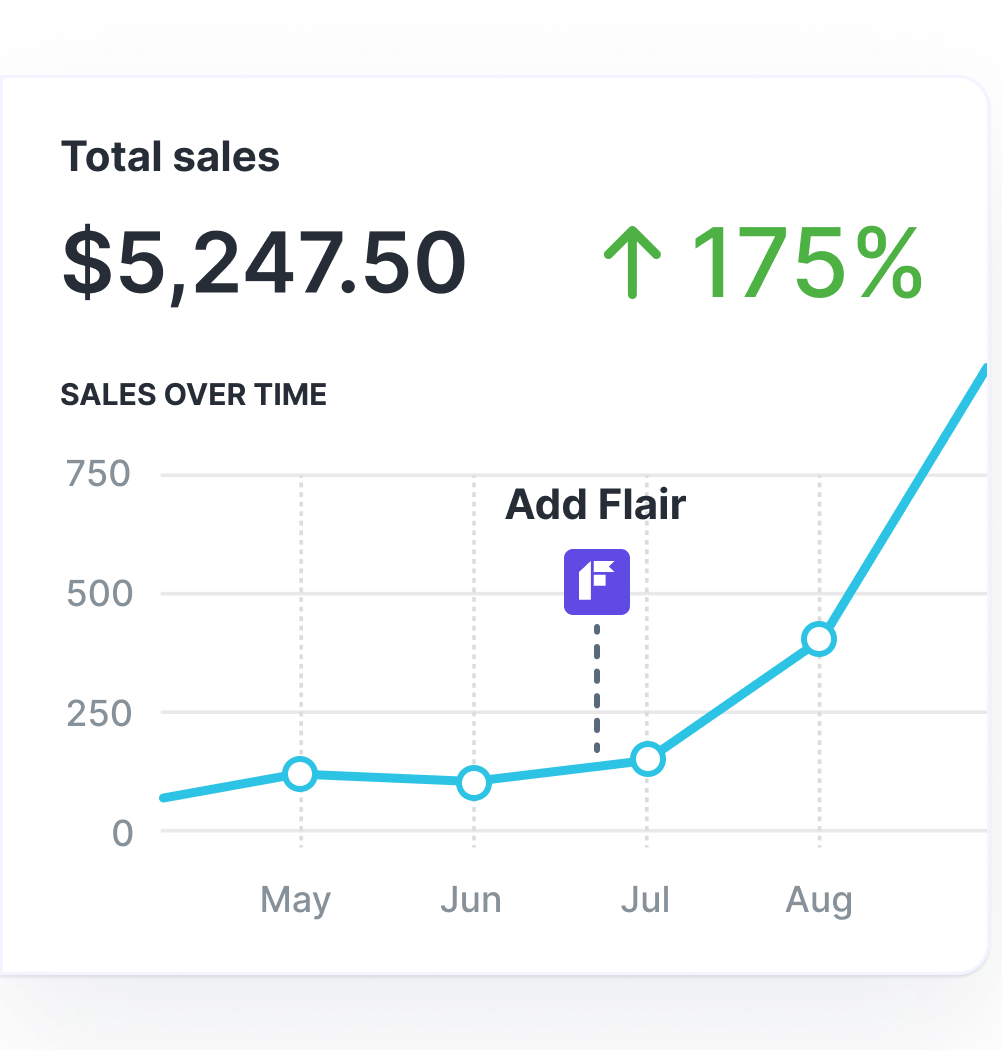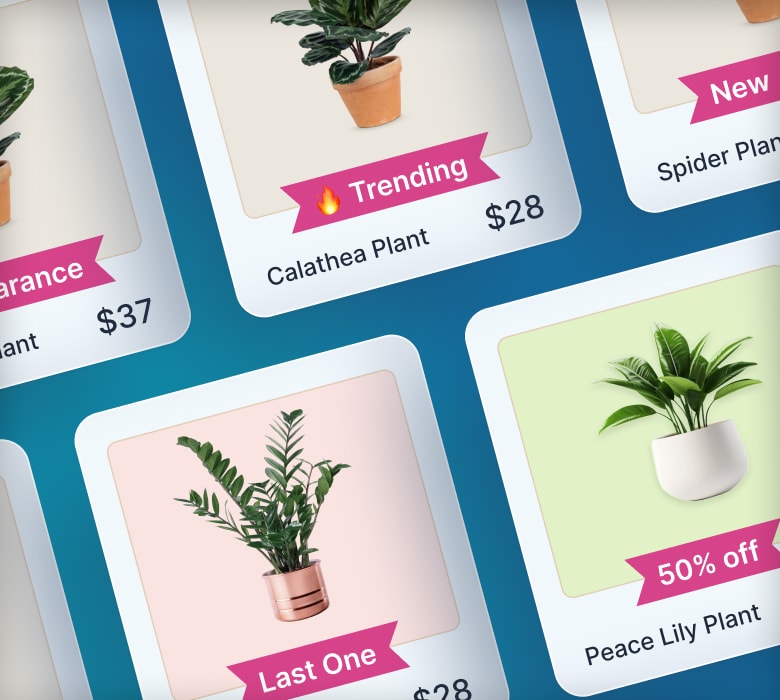Beginner's Guide to Starting a Profitable Shopify Store in 2025

Picture this: Shopify powers 28% of all online stores in the US and a total of 4.6 million ecommerce sites worldwide. That's not just market dominance – that's proof of massive opportunity waiting for you in 2025.
But here's the reality check you need: despite what those flashy YouTube ads promise, dropshipping and ecommerce aren't get-rich-quick schemes. The entrepreneurs actually making money? They're the ones who understand that success comes from consistent testing, learning, and improving their stores day after day.
The good news? With Shopify's robust platform and the right approach, creating a conversion-focused store that actually makes money is absolutely achievable. This guide will show you exactly how to do it, step by step, without the fluff or false promises.
Step 1: Building Your Ecommerce Strategy
In 2025's competitive landscape, you need a solid strategy to succeed, and understanding the current environment is crucial for your success.
Understanding the 2025 Ecommerce Landscape
The market has evolved dramatically. Take one of the most significant trends for Shopify merchants, AI personalization. Valued at $9.01 billion in 2025, it’s projected to reach $64 billion by 2034.

Here are some of the other trends and technologies set to power ecommerce growth in the coming years:
Mobile Commerce Trends:
- Mobile-first design is non-negotiable: As more consumers shop via smartphones, designing with a mobile-first approach ensures an optimal user experience, increasing engagement and conversion rates.
- One-click checkout optimization: Streamlining the checkout process with one-click options reduces cart abandonment and enhances the convenience for mobile shoppers.
- Progressive web apps for faster loading: Implementing progressive web apps (PWAs) provides users with faster loading times and a seamless app-like experience, even on mobile browsers.
AI Personalization:
- Dynamic product recommendations: Utilizing AI to offer personalized product suggestions can increase sales by presenting customers with items that match their preferences and shopping behavior.
- Predictive customer behavior analysis: AI-driven insights into customer behavior help businesses anticipate needs and tailor marketing strategies to improve customer satisfaction and retention.
- Automated email marketing sequences: Automating email campaigns with AI allows for personalized and timely communication, enhancing customer engagement and driving conversions.
Omnichannel Selling:
- Marketplaces account for 67% of global sales: Leveraging popular online marketplaces can significantly expand reach and sales potential, as they dominate a large portion of global e-commerce.
- Social commerce integration: Integrating social media platforms into the sales strategy enables businesses to reach customers where they spend a significant amount of time, facilitating direct purchases through social channels.
- Multi-platform inventory management: Efficiently managing inventory across multiple platforms ensures consistent stock levels and availability, preventing overselling and enhancing customer satisfaction.
Creating Your Business Plan
Your conversion-centric approach should start with a compelling mission statement. Follow these steps:
- Define your unique value proposition
- Identify your target customer's pain points
- Craft a clear, benefit-focused message
- Test different versions for conversion rates
Financial Planning Essentials
Calculate your startup costs including:
- Shopify platform fees ($29 – $299+ per month)
- Inventory investment
- Marketing budget (10% – 15% of projected revenue)
- Design and development costs
Niche Evaluation Framework
A niche evaluation framework is a strategic tool for assessing potential niches by scoring them against key criteria. Begin by assigning a weight to each criterion based on its importance to your business goals, then score each niche from 1 to 10 for these criteria:
| Criteria | Weight | Score (1 – 10) |
| Market demand | 30% | ___ |
| Competition level | 25% | ___ |
| Profit margins | 25% | ___ |
| Growth potential | 20% | ___ |
Focus on niches where you can achieve at least 7/10 in market demand and profit margins. Remember, successful ecommerce isn't just about selling products – it's about solving problems and creating experiences that convert visitors into loyal customers.
Your strategy should balance current trends with timeless business fundamentals for sustainable growth.
Step 2: Store Setup and Design for Maximum Conversion
Setting up your Shopify store for maximum conversions starts with solid technical foundations, then focuses on strategic design elements that turn visitors into buyers.
For more conversion tips, see our related guide: Why Is My Shopify Store Not Converting (And How To Fix It)
Technical Foundation Setup
First, create your Shopify account and select a memorable domain name that reflects your brand. Set up payment gateways like Shopify Payments, PayPal, and Stripe to accommodate customer preferences. Configure shipping zones and tax settings based on your target markets.
Conversion-Centric Design Strategy
Your design strategy should revolve around the three-color scheme approach: choose one primary brand color, one complementary accent color, and use white/neutral tones for balance. This creates visual harmony while reducing decision fatigue for customers.
Beauty Bakerie gets it right. See how the gold accent color stands out against the pink primary brand color, and how the brand uses plenty of white space to draw the eye:

Craft a compelling mission statement that appears prominently on your homepage. Position your main products front and center with high-quality images and clear value propositions. Optimize product pages with detailed descriptions, multiple product angles, and authentic customer testimonials featuring real photos.
Essential Store Pages
Create these conversion-focused pages:
- Homepage with featured products
- Product pages with detailed specifications
- About Us page showcasing your mission
- Contact page with multiple communication options
- FAQ page addressing common concerns
- Reviews/Testimonials page for social proof
Mobile Optimization and Trust Signals
Ensure your store loads quickly on mobile devices by choosing from hundreds of responsive Shopify themes in Shopify’s official store.

When choosing Shopify themes, consider your brand's aesthetic and the features you need to enhance user experience. Ensure the theme is customizable to fit your unique business requirements. It's also beneficial to read reviews and test the theme's demo to gauge its performance and suitability for your store. And be sure to test all functionality across different screen sizes.
Add trust signals like security badges, customer reviews, money-back guarantees, and clear return policies. Display authentic testimonials with customer photos throughout your site. These build credibility and reduce purchase anxiety.
Focus on loading speed, intuitive navigation, and prominent call-to-action buttons. Your product pages should answer every possible customer question before they need to ask. Remember, every design element should guide visitors toward making a purchase decision with confidence.
Step 3: Product Strategy and Optimization
Your product pages are crucial for conversions. Here's how to master them while building a profitable catalog.
Product Page Mastery
Transform dense product descriptions into scannable, benefit-focused bullet points. Instead of "Made from 100% cotton," write "Stay cool and comfortable all day with breathable cotton fabric." Pair these with high-quality images, videos, and infographics to serve both visual learners and detail-oriented readers.
Remove unnecessary clutter ruthlessly. Eliminate confusing navigation, excessive text blocks, and irrelevant widgets. Focus on three key elements:
👉 Compelling headlines
👉 Benefit-driven bullets
👉 Clear call-to-action buttons
Let’s take a look at a great example courtesy of Duradry:

Smart Sourcing Strategies
Choose between dropshipping and inventory models based on your risk tolerance. Dropshipping offers lower startup costs but smaller margins (typically 10% – 30%), while holding inventory provides better profit margins (40% – 60%+) but requires upfront investment.
Build strong supplier relationships by communicating regularly, paying promptly, and starting with small orders. Use tools like Oberlo or AliExpress for dropshipping, or Alibaba for bulk purchasing.
Calculate profit margins carefully: Selling Price - (Product Cost + Shipping + Payment Processing + Marketing) = Profit
Psychological Pricing for Profitability
Implement charm pricing ($19.99 vs $20) and anchor high-value items first. Create urgency with limited-time offers and scarcity indicators.
Case Study: An online jewelry store increased conversions by 23% by restructuring product pages with benefit-focused bullets ("Hypoallergenic – perfect for sensitive skin") and removing cluttered sidebars. They also switched from wholesale sourcing to direct manufacturer relationships, improving margins from 35% to 55%.
Pro tip: Learn more in How to Price Products on Shopify: Complete Pricing Strategy Guide
Test different layouts using A/B testing tools. Monitor which bullet point styles, image placements, and pricing strategies drive the highest conversions. Remember, optimization is ongoing – what works today might need tweaking tomorrow based on customer behavior and market changes.
Step 4: Marketing and Customer Acquisition
Your ecommerce success hinges on a strategic multi-channel marketing approach that captures customers wherever they engage online. Start by establishing your presence across social media platforms where your target audience spends time. Instagram and Facebook advertising offer precise targeting capabilities, while TikTok and Pinterest drive discovery-based traffic.
SEO Foundation and Email Marketing
Optimize your product pages and blog content for search engines to capture organic traffic. Simultaneously, build robust email marketing automation sequences. Create welcome series for new subscribers, product recommendation flows, and seasonal campaigns that nurture leads into paying customers.
Abandoned Cart Recovery: Your Secret Weapon
Here's where many store owners miss significant revenue opportunities. Since online shopping distractions are inevitable, implementing abandoned cart recovery via email and SMS is crucial. Set up automated sequences that trigger 1 hour, 24 hours, and 72 hours after cart abandonment. Your first email should be gentle and helpful, the second should include social proof or reviews, and the third should offer a small incentive.
SMS campaigns see significantly higher average open rates than email, making it essential for your follow-up strategy.

Combining email and SMS-based cart abandonment campaigns helps you capture sales that would otherwise vanish, directly maximizing your return on advertising spend.
Automation and Conversion Optimization
Leverage Shopify apps like Flair to create automated, goal-driven on-site promotions. Flair helps fill the post-click gap in most ecommerce digital marketing strategies by offering a suite of on-site tools designed to capture attention, foster engagement, and enhance conversion rates. These tools encompass a range of features, including product badges, sale banners, and dynamic offers such as conditional free shipping.
The platform's dynamic badges and banners support conversion strategies by presenting targeted offers based on customer behavior. This automated approach enables merchants to increase their website's conversion rate without the need for manual intervention.

Grow Your Shopify Sales by over 175% with Flair
-
Increase sales using product badges and sales banners
-
Maximize conversions with scarcity, urgency and countdown timers
-
Automate promotions with targeted rules and scheduling
Building Customer Loyalty
Focus on post-purchase engagement through automated review requests, loyalty program invitations, and personalized product recommendations. Create VIP segments for repeat customers and offer exclusive early access to new products or special discounts.
Setup Strategy
Start with one channel and perfect it before expanding. If you're beginning with email marketing, ensure your automation sequences are working smoothly before adding SMS. Track metrics like open rates, click-through rates, and conversion rates for each channel.
Your customer acquisition costs will decrease as you optimize these systems, and your customer lifetime value will increase through strategic retention efforts. Remember, acquiring a new customer costs 5x more than retaining an existing one, making your follow-up and loyalty strategies just as important as initial acquisition.

Step 5: Operations and Sustainable Growth
Your ecommerce journey's success hinges on building rock-solid operations that can weather any storm. Forget the overnight success stories you see on social media – real growth comes from consistent, data-driven improvements and unwavering persistence.
Fulfillment Excellence: Your Foundation
Start by optimizing your shipping strategy. Choose reliable carriers, negotiate better rates as you scale, and implement automated tracking notifications. Your customers expect transparency, so invest in a robust customer support system early. Set up helpdesk software, create detailed FAQs, and establish response time standards. Remember, exceptional support turns one-time buyers into lifelong advocates.
Pro tip: Learn more in How To Set Up International Shipping on Shopify
Analytics and Financial Management
Track the metrics that truly matter: Customer Acquisition Cost (CAC) versus Customer Lifetime Value (CLV). If your CLV isn't at least 3x your CAC, you need to adjust your strategy. Monitor conversion rates, average order value, and return rates religiously. These numbers tell the story of your business health.
Scaling with Sustainability in Mind
Growth isn't just about increasing sales – it's about building systems that support that growth. Implement automation wherever possible: inventory management, email marketing, and social media posting. This frees you to focus on strategic decisions rather than daily tasks.
Growth Readiness Indicators
You're ready to scale when you have predictable monthly revenue, positive cash flow for three consecutive months, and systems that run without your constant oversight. Start thinking about team building – hire for roles that directly impact revenue or free up your time for high-level strategy.
The Long Game Approach
Sustainable growth requires patience and continuous learning. Study your competitors, invest in your education, and adapt based on data, not emotions. Every setback is a learning opportunity, every small win builds momentum.
Your commitment to consistency and improvement will compound over time. While others chase quick fixes, you're building an empire that lasts. Stay focused on the fundamentals, measure everything, and remember – persistence beats perfection every time.





